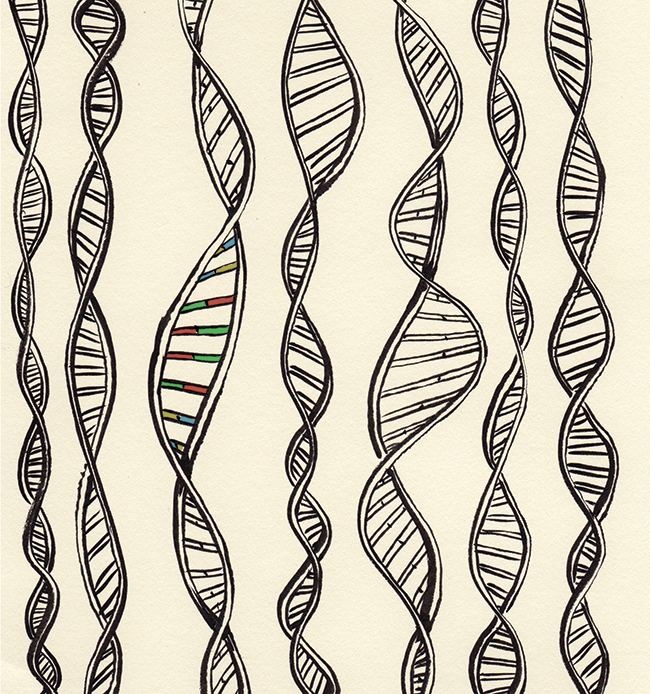ZEITGUIDE TO GENE DRIVES

On a list of must-know science terms last month, we spotted this one: gene drive.
What is a gene drive? It’s a revolutionary new way to use CRISPR. Crisp-wha? OK, first, a refresher on CRISPR. It stands for “clustered regularly interspaced short palindromic repeats.” Scientists discovered these bits of repeated genetic material in bacteria 30 years ago, but more recently figured out how to turn it into a cheap, fast and precise gene editing tool. (There’s a much more comprehensive explanation of CRISPR here in Quanta magazine.) In short, CRISPR works like a cut-and-paste function for bits of DNA.
So, what if you put a cut-and-paste function into a gene? That’s essentially what gene drives do.
Here’s why scientists would want to do that. When two organisms mate, their offspring inherit chromosomes from both parents, so a trait has only a 50% chance of being expressed in the offspring, and a 25% chance in the next generation, and so on. So genetic modifications fade away. When a chromosome has a gene drive on it, however, the gene drive snips out the undesirable DNA from the unmodified parent’s chromosome. Then the offspring’s genetic machinery repairs the damage by pasting in the modified bit of DNA.
Suddenly, scientists can almost 100% ensure that new bit of DNA is inherited by all offspring. That means, theoretically, the genetic change could spread through a whole population in the wild, or at least until some other evolutionary change or resistance sets in.
In labs, this has been tested on fruit flies, mosquitoes and yeast, and scientists hope to use this technique to wipe out humanity’s worst enemies or save endangered species. Scientists already have their sights set on eradicating malaria-spreading mosquitos and have raised millions in funding, including $75 million from Bill Gates.
Gene drives may get their first mammalian application in New Zealand in the coming years, where invasive rodents have devastated flightless bird populations. To exterminate an invasive species of mice, a team of scientists altered a subset of mouse genomes so that the animals only reproduce males. If there are no female mice to breed with, the population will gradually die out.
But not everyone is convinced such interventions are a good idea. “I think there are actually a hell of a lot of things that could go wrong. If you think you are just going to release things and they are going to eradicate [rodents] for you, it’s a big mistake,” says Neill Gemmell, a researcher at the University of Otago in New Zealand.
It’s not surprising that messing with evolution is highly controversial. Ethicists, environmentalists and conservationists are split on the issue of tinkering with genes in the wild even in the name of saving endangered species or saving human lives. Scientists are trying to model how the genetic change will spread, or not, but let’s just say that anyone squeamish about GMO corn isn’t likely to support CRISPR-ed rodents.
Activists argue governments should ban gene drives until the impacts are better understood and regulations set in place. A coalition of environmental activists called for a global moratorium on gene drives at the UN Convention on Biodiversity in December, but their calls were rejected and the final agreement just “urged caution.”
